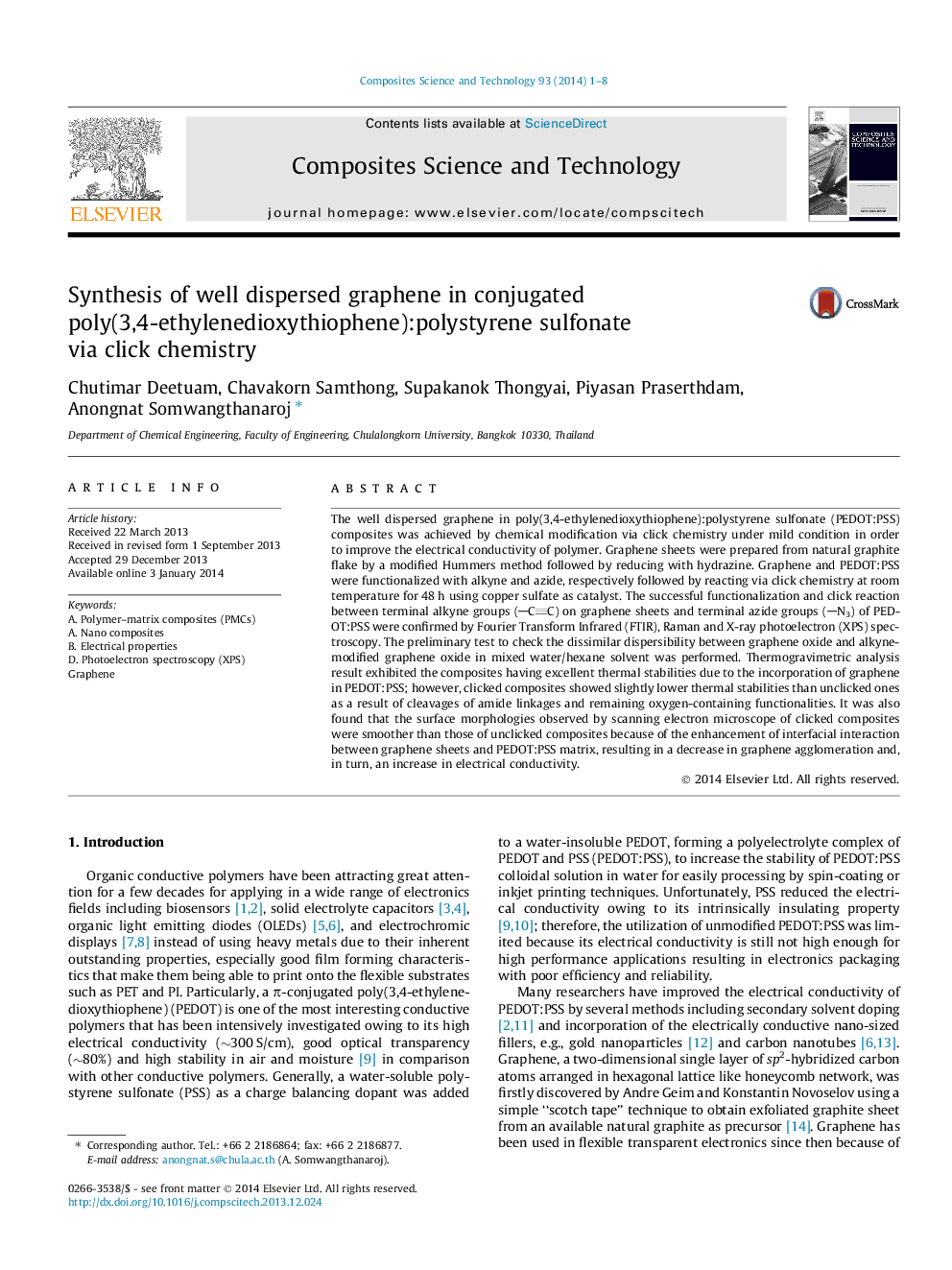| Article ID | Journal | Published Year | Pages | File Type |
|---|---|---|---|---|
| 820279 | Composites Science and Technology | 2014 | 8 Pages |
The well dispersed graphene in poly(3,4-ethylenedioxythiophene):polystyrene sulfonate (PEDOT:PSS) composites was achieved by chemical modification via click chemistry under mild condition in order to improve the electrical conductivity of polymer. Graphene sheets were prepared from natural graphite flake by a modified Hummers method followed by reducing with hydrazine. Graphene and PEDOT:PSS were functionalized with alkyne and azide, respectively followed by reacting via click chemistry at room temperature for 48 h using copper sulfate as catalyst. The successful functionalization and click reaction between terminal alkyne groups (CC) on graphene sheets and terminal azide groups (N3) of PEDOT:PSS were confirmed by Fourier Transform Infrared (FTIR), Raman and X-ray photoelectron (XPS) spectroscopy. The preliminary test to check the dissimilar dispersibility between graphene oxide and alkyne-modified graphene oxide in mixed water/hexane solvent was performed. Thermogravimetric analysis result exhibited the composites having excellent thermal stabilities due to the incorporation of graphene in PEDOT:PSS; however, clicked composites showed slightly lower thermal stabilities than unclicked ones as a result of cleavages of amide linkages and remaining oxygen-containing functionalities. It was also found that the surface morphologies observed by scanning electron microscope of clicked composites were smoother than those of unclicked composites because of the enhancement of interfacial interaction between graphene sheets and PEDOT:PSS matrix, resulting in a decrease in graphene agglomeration and, in turn, an increase in electrical conductivity.
